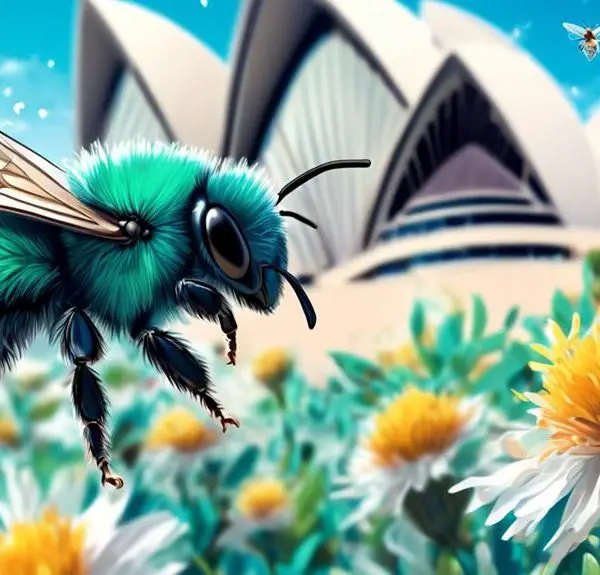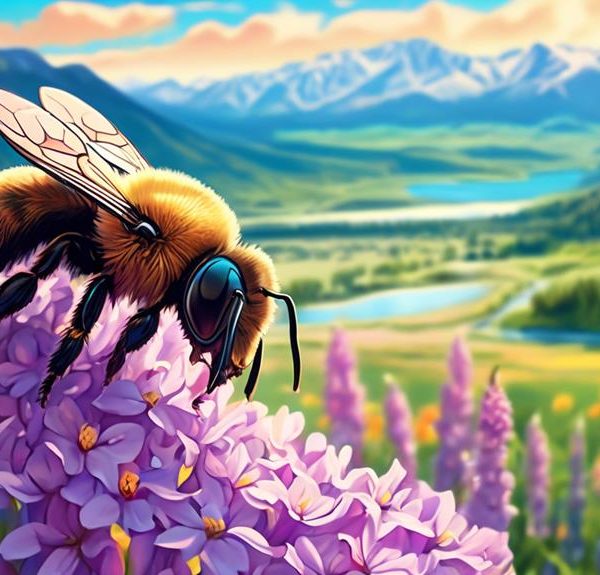Peek into the intriguing possibility of Mason Bees inhabiting Hawaii's tropical ecosystem, and the broader implications on biodiversity and conservation.
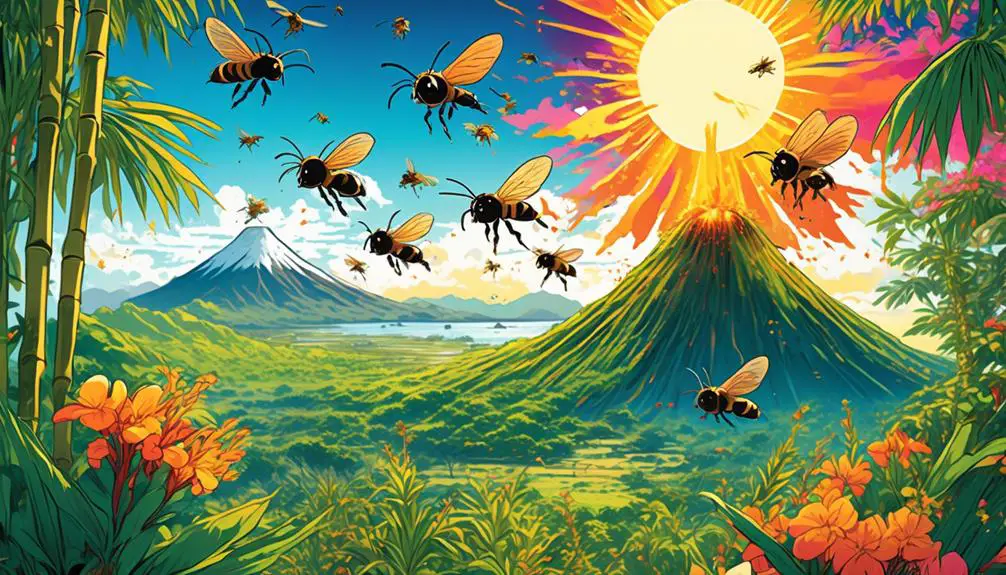
Are There Mason Bees in Hawaii?
You might think it's unlikely, considering the unique and isolated nature of Hawaii's ecosystem, but have you ever wondered if there are Mason Bees buzzing around the Hawaiian Islands? These industrious, solitary bees, known for their beneficial role in pollination, typically favor temperate climates.
But could it be possible that they've found a home amidst the tropics? While it's a curious question, it's also a significant one, as it touches on broader topics such as biodiversity, conservation, and the impact of introduced species.
So let's explore this together, shall we? Surely, the answer might surprise you.
Key Takeaways
- Mason bees are vital pollinators in Hawaii, ensuring the reproduction of native plants.
- Mason bees are solitary and each female builds her own nest.
- Mason bees can adapt to nesting in cracks and holes in buildings or wooden structures.
- Mason bees require flowering plants for nectar and pollen within a close range.
Understanding Mason Bees
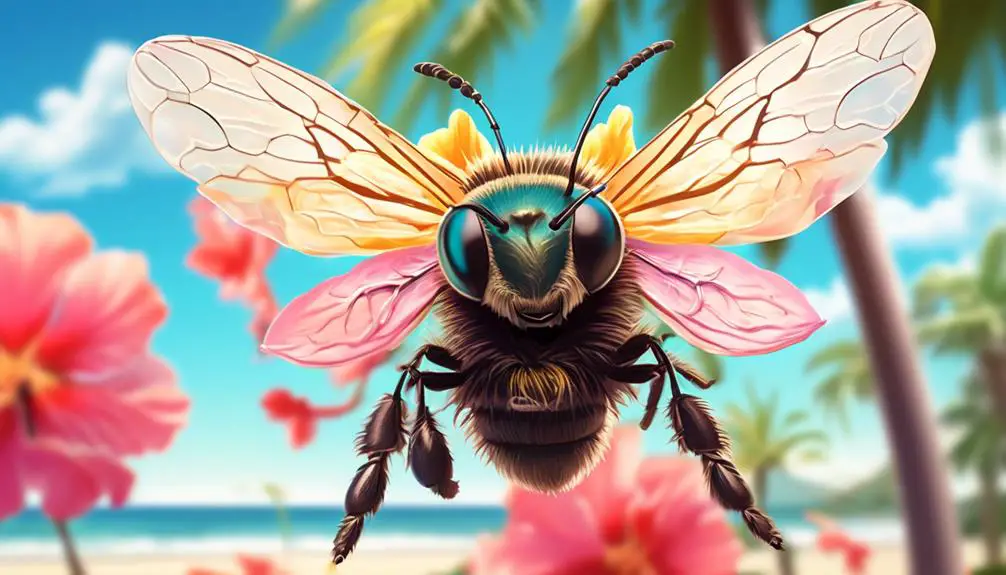
To truly grasp the significance of Mason bees in Hawaii, it's imperative to first understand their unique biology, behavior, and role in the ecosystem.
Unlike other bees, Mason bees are solitary, meaning they don't live in colonies. Instead, each female is a queen and builds her own nest, laying eggs in individual cells separated by a partition of mud – hence the name 'Mason'.
You'd be interested to know that Mason bees are renowned for their work ethic. They're more efficient pollinators than honeybees, which makes them invaluable to both natural ecosystems and agriculture. They're early risers, starting their work at dawn, and they aren't picky about the weather either. These bees will carry on pollinating even in cold or damp conditions, demonstrating an impressive resilience.
Their biology differs from other bees in several ways. They've a metallic blue or green hue, and the females carry pollen on their abdomen instead of their legs.
It's this biology and behavior that makes Mason bees so crucial to Hawaii's ecosystem, playing a vital role in pollinating native flora and maintaining biodiversity.
Hawaiian Ecosystem Explained
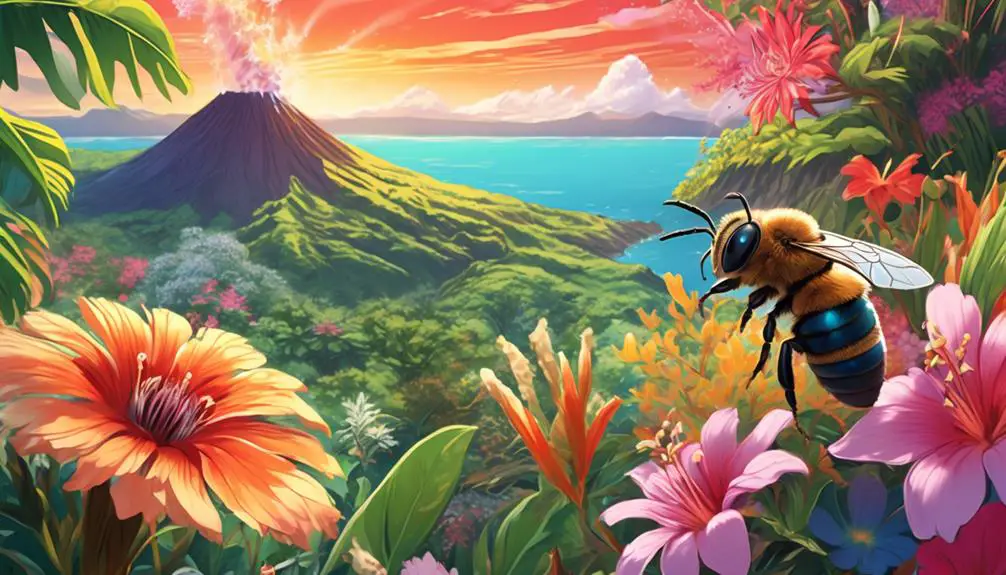
In understanding the Hawaiian ecosystem, you'll find a staggering array of unique flora and fauna, intricately interwoven in a delicate balance where Mason bees play a fundamental role. You'll discover that this ecosystem, isolated in the middle of the Pacific, has evolved over millions of years into a complex web of interdependencies.
The Hawaiian islands are home to a rich biodiversity, including over 10,000 native species. Many of these species are endemic, meaning they're found nowhere else in the world. This unique environment, however, is under constant threat from invasive species, climate change, and human activity.
Now, let's focus on the Mason bees. They're solitary bees, not hive-dwelling like honeybees. They're vital pollinators, ensuring the reproduction of many native plants. Without them, the ecosystem would suffer. Hawaii's Mason bees have adapted to their specific environment, demonstrating a variety of unique behaviors and characteristics.
In this delicate ecosystem, each species, including the Mason bees, plays a critical role in sustaining the balance. Understanding the role of these bees and preserving their habitats are key to maintaining Hawaii's biodiversity and overall ecological health.
Mason Bees' Preferred Habitats
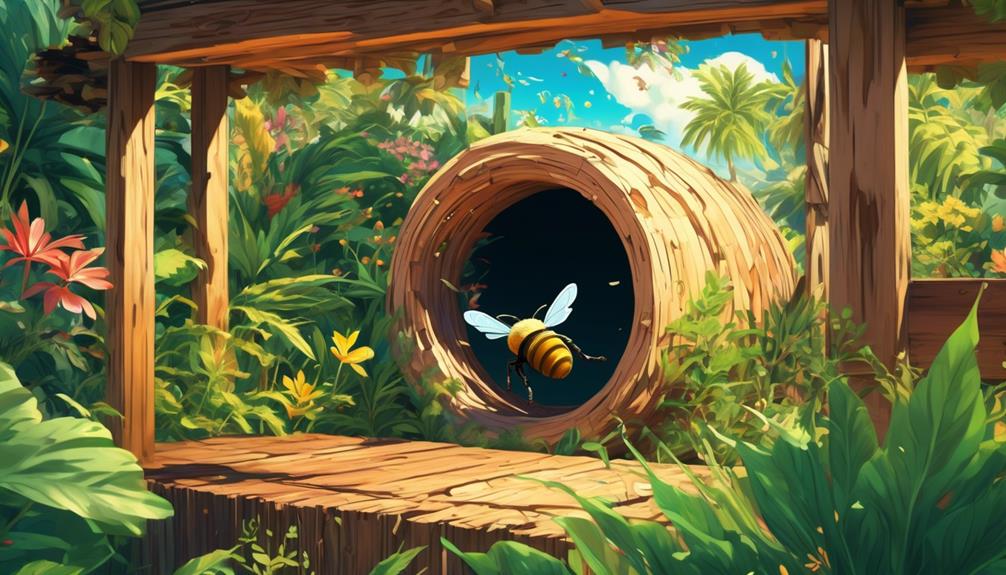
Delving into the preferred habitats of Mason bees, you'll find they're often drawn to woody habitats, specifically favoring dead trees or fallen logs where they can burrow and build nests. This instinctual preference is due to the fact that these locations offer an ideal environment for laying eggs, providing both shelter and a food source for the emerging larvae.
Furthermore, Mason bees demonstrate a unique preference for nesting in pre-existing cavities, such as hollow stems or insect-made holes. They're not aggressive wood borers like some other bee species. In fact, they're quite opportunistic, repurposing abandoned nests for their own use.
In urban and suburban areas, you'll often find them nesting in cracks and holes in buildings or wooden structures. This adaptability allows these industrious insects to thrive even in human-dominated landscapes.
However, it's crucial to note that they need access to mud for constructing and sealing their nests. Hence, habitats with a nearby mud source are highly preferred. Additionally, they require flowering plants for nectar and pollen within a close range, as their foraging radius typically doesn't extend beyond a few hundred meters from their nests.
Mason Bees in the Pacific Region
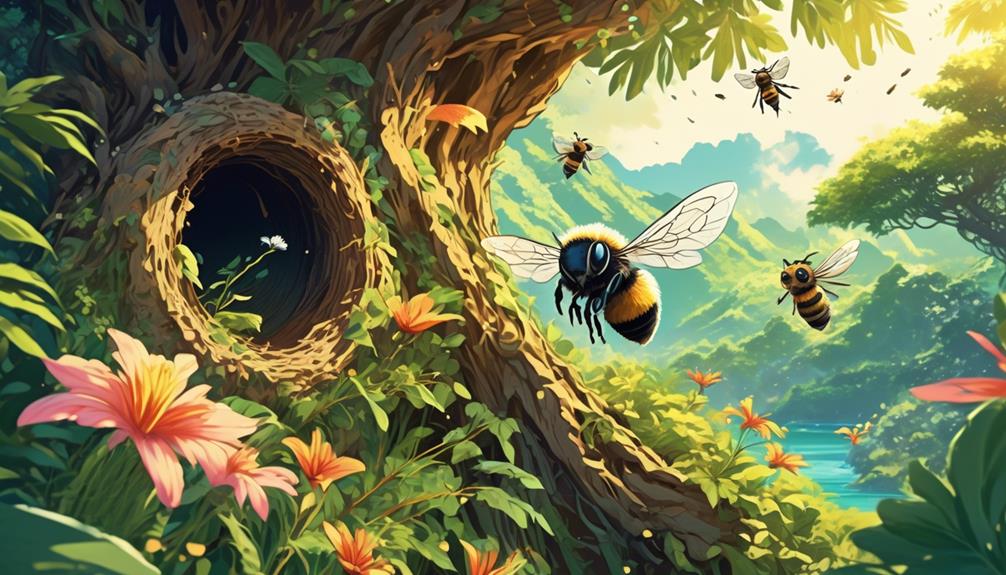
Across the vast expanse of the Pacific region, you'll discover Mason bees have adapted ingeniously to a variety of environmental conditions, flourishing even in the unique ecosystems of Hawaii. These solitary bees, unlike their honeybee counterparts, don't live in colonies. Instead, they've evolved to thrive in the diverse habitats of the Pacific, from the volcanic landscapes of Hawaii to the dense rainforests of the Pacific Northwest.
In Hawaii, Mason bees are a vital part of the ecosystem. They're superb pollinators, and their preference for native plants supports the biodiversity of the islands. They've developed remarkable adaptability, making use of the islands' unique flora for nesting materials and food.
Pacific Mason bees exhibit an interesting behavior: they seal their nests with a mixture of soil, chewed leaves, and saliva, hence their name. This practice protects their offspring from predators and harsh weather, showcasing their inherent resilience.
Despite their small size, Mason bees play a significant role in the Pacific region. Their adaptive behaviors, coupled with their importance as pollinators, make them a fascinating subject of study. Understanding their habits and preferences can help us protect these indispensable creatures and maintain the health of our ecosystems.
Pollinators of Hawaii
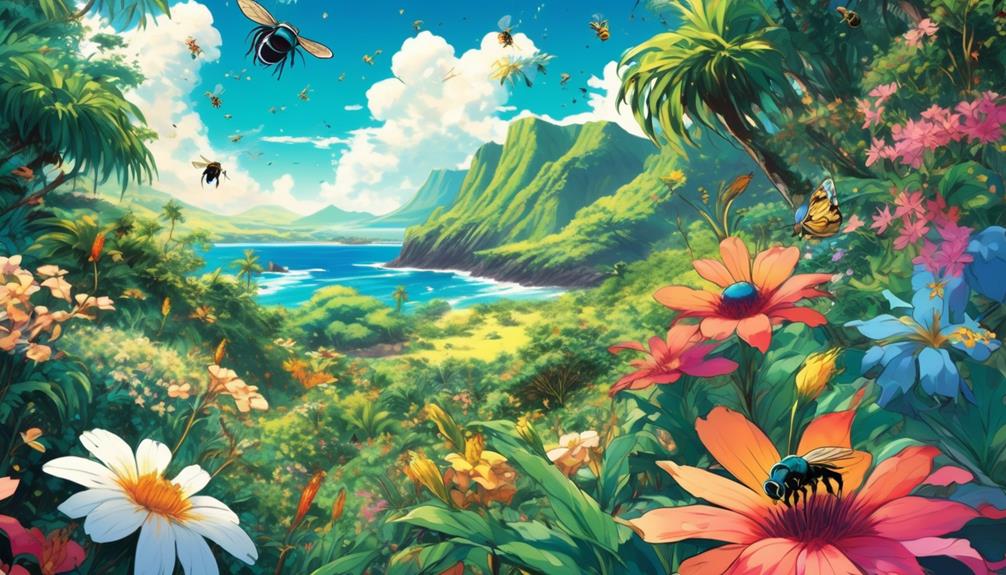
Often overlooked, you'll find that Hawaii's diverse range of pollinators, including the industrious Mason bees, play a crucial role in maintaining the island's unique ecosystem. These diligent workers, often unrecognized, ensure the continuation of native plant species, contributing to biodiversity and the overall health of the environment.
Mason bees, in particular, are solitary bees, not producing honey or wax but focus on pollination. They're highly efficient, with a single Mason bee capable of doing the work of 100 honeybees. They're super pollinators, ensuring the propagation of local flora.
Hawaii's pollinators also include a variety of butterflies, moths, beetles, and birds, each with a specific role in the intricate pollination process. For example, the Kamehameha butterfly, Hawaii's state insect, significantly aids in pollination, while certain moth species pollinate native silversword plants during nocturnal hours.
Yet, these pollinators face threats, including habitat loss, climate change, and invasive species. It's vital to protect them, for without these tireless pollinators, Hawaii's unique ecosystem could suffer irreparable damage. After all, pollinators aren't just part of the ecosystem – they're the linchpin that holds it all together.
Conclusion
In conclusion, you'll find no native mason bees in Hawaii. This is due to Hawaii's unique ecosystem, which doesn't align with the mason bees' preferred habitats. While they're common pollinators in the Pacific region, Hawaii's isolation and distinct flora mean these industrious insects aren't buzzing around the islands.
The pollination job is left to other native species. Therefore, Hawaii's rich biodiversity doesn't include the mason bee.

